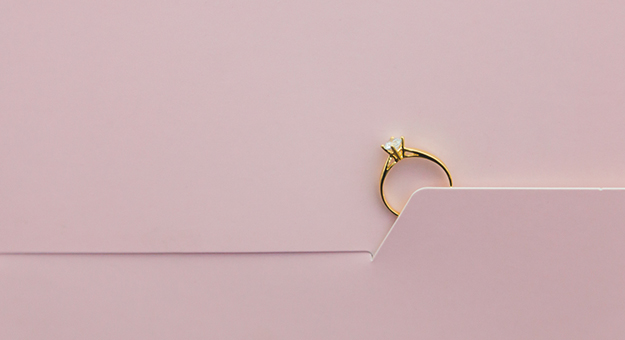An engagement ring is symbolic for a number of reasons. One – he has put a ring on it; two – it’s a promise made and a sign of commitment; three – it’s a symbol of your love and the future you will journey together. The list goes on. An engagement is a special moment that most women will remember for life. Thus, you would want your diamond ring to sparkle for just as long. This would require a little know-how in cleaning your ring right – fret not, we’ve got all the care tips from the experts at DeGem and De Beers to help your stones continue dancing in the light:
First, let’s understand how a diamond loses its brilliance
Your hands come into contact with lots of chemical on a daily basis. Think washing up soaps, hand creams, perfume, makeup, and etc, which can affect your diamond ring. According to Andrew Coxon, Head of the De Beers Diamond Institute, this has a little to do with diamond science as all hydrocarbons, oils and greases are drawn to surfaces that do not contain oxygen. Diamonds, being pure carbon, contains no oxygen and hence, it is the perfect surface to attract all hydrocarbons such as hand creams. As a result this could influence the clarity and brilliance of the stone.
Now, how to clean your diamond ring at home?
First thing to keep in mind – do not clean your ring over an open sink! Use a bowl instead to avoid the risk of losing your ring down the plug hole forever. Soak your ring in a solution containing clean water with washing up liquid for 15 minutes, says Leow Mei Fui, Senior Marketing Manager at DeGem. Washing liquids are designed to be gentle on the skin and less likely to tarnish the polish off the gold and platinum rings than other grease removing products. After that, use a soft cloth to wipe the diamond to remove any residue or you could also use a toothbrush with soft bristle to gently clean the areas within the ring setting that are hard to reach.
But care must be taken to rinse it well afterwards, advises Coxon. For example, you should rinse the ring under running warm water to avoid a build-up of soapy residues behind the diamond inside the ring. Important thing to note: if the diamond moves in its setting when you’re cleaning at home, stop! This means that the claws are worn, so you need to take it in to the jeweller to examine for wear and tear, make the necessary adjustments and clean/polish the diamond.
How do the professionals do it?
At DeGem, a professional clean involves an ultrasonic cleaner to remove encrusted dirt on diamonds. This is part of the brand’s value-added service for jewelleries that are bought from them.
While at De Beers, you could get a professional polish using a combination of hot steam and ultrasonic cleaning to remove dried oils and greases. You could also get an annual check on the diamonds.
So, how often should you clean?
As often as necessary. If you wear your diamond ring on a regular basis, it is best to clean the ring once a week. Leow advises that a visit to a professional jeweller should be done once every two months to ensure your diamonds retain its sparkling appeal.
If you’re pressed for time, get the De Beers Instant Diamond brilliance wipe that contains fine diamond dust and some medical alcohol to polish your diamond in a few seconds whilst still wearing it.
Dos and don’ts of caring for your diamond ring
✓ Do avoid contact with oils and greases.
✗ Don’t wear your diamond ring when you’re using hand lotion, hair spray, soap or even eating greasy food.
✓ Do keep your diamond ring in a proper jewellery box with individual slots.
✗ Don’t wear or put two diamond rings together in the same place as one may scratch or chip the other.
✓ Do clean your diamond ring to keep its brilliance.
✗ Don’t use strong solutions such as chlorine, bleach or even toothpaste to clean your ring as these can cause damage to the gold component of the ring.
| SHARE THE STORY | |
| Explore More |




